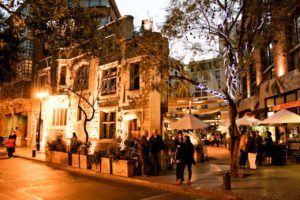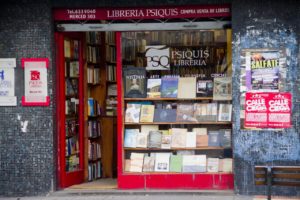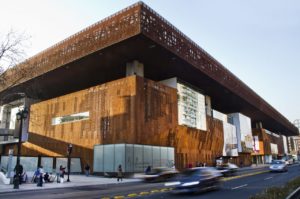Santiago’s Urban Star — Barrio Lastarria
February 10, 2017 - 1 minute readHome to both the Luciano K and Lastarria Boutique hotels, Barrio Lastarria is one of Santiago’s most interesting areas, a trendy blend of arts and entertainment, eating and drinking, bookstores and boutiques in historic buildings that flaunt many different architectural styles.
Wedged between Parque Forestal, Santa Lucia Hill and Avenida O’Higgins, the triangular Lastarria is also one of the oldest neighborhoods in the Chilean capital. Bartolomé Blumenthal (Flores), a German soldier of fortune who participated in Pedro de Valdivia’s  conquest of Chile, is thought to have founded Lastarria in the mid 16th century.
conquest of Chile, is thought to have founded Lastarria in the mid 16th century.
Little remains from those early years. Most of the neighborhood’s historic landmarks date from the 19th century, including the Iglesia de la Vera Cruz (1852), a memorial church to Valdivia erected on the spot where the conquistador allegedly lived following the Spanish invasion. The distinctive red-and-white church still looms above Calle Jose Victorino Lastarria.
Both the barrio and the  street are named for José Victorino Lastarria, a popular 19th-century Chilean politician and educator whose statue graces Santa Lucia Hill. Farther up the street is Plaza Mulato Gil de Castro, a lively cobblestone square that fronts the Museum of Visual Arts (MAVI) and serves as a general gathering place for the entire neighborhood. Other Lastarria icons include the Museum of Contemporary Art and Centro Gabriela Mistral, an audacious cultural center with a year-round slate of concerts, theater, festivals and art exhibits.
street are named for José Victorino Lastarria, a popular 19th-century Chilean politician and educator whose statue graces Santa Lucia Hill. Farther up the street is Plaza Mulato Gil de Castro, a lively cobblestone square that fronts the Museum of Visual Arts (MAVI) and serves as a general gathering place for the entire neighborhood. Other Lastarria icons include the Museum of Contemporary Art and Centro Gabriela Mistral, an audacious cultural center with a year-round slate of concerts, theater, festivals and art exhibits.
0 Comments